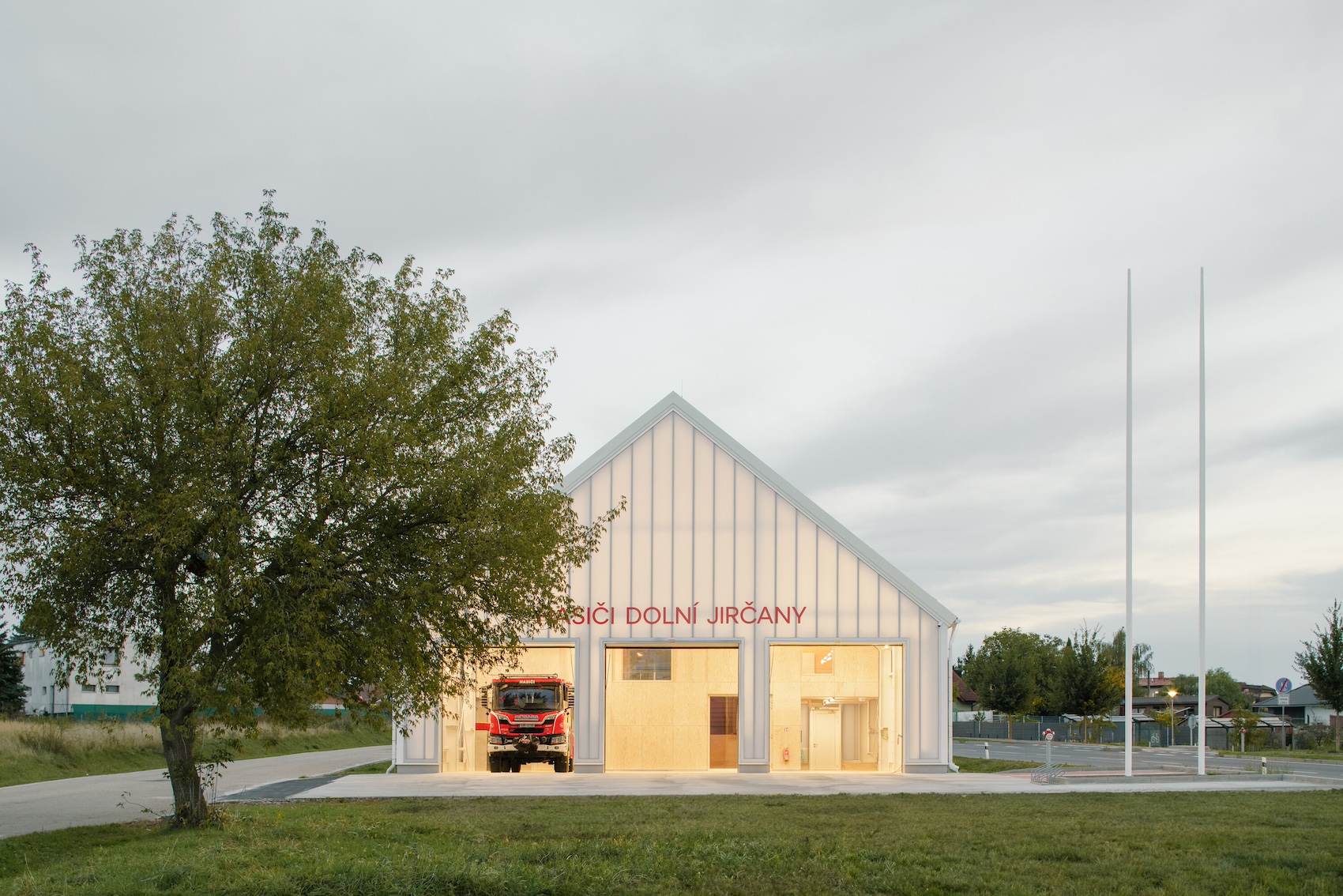SOA architekti’s Jirčany Fire Station, located just south of Prague, draws on the typology of rural barns to deliver a functional and symbolic civic building that bridges its residential and educational surroundings.
Photos
Alex Shoots Buildings
Prague-based SOA architekti has completed Jirčany Fire Station, a new facility the Dolní Jirčany region, just south of Prague, that looks to enhance the operational capacity of the volunteer fire department while integrating into its rural site. Located in the town of Psáry, the station replaces a nondescript structure and occupies a strategic position on municipal land in the northwestern development area, providing immediate access to transport infrastructure for swift emergency responses.
The firehouse’s rectangular shape and gabled roof reference the area’s rural barn vernacular, creating a visual dialogue with the nearby elementary school and underscoring its dual role as a civic landmark and a practical facility. Positioned on a nearly triangular plot bordered by family homes and the school, the building mediates between these two scales and the domestic and public realms.
SOA’s architectural concept revolves around three “temperature zones”: exterior, garage and main building, each designed for operational efficiency and thermal management. Lightweight polycarbonate panels, steel framing, and Cross-laminated timber (CLT) elements have been employed to create a robust structure that can adapt to future needs. Steel trusses and ventilation rods optimise the structural framework, reducing waste while maximising functionality.
The building’s steel-framed hall (that houses the fire engines) is sheathed in a translucent polycarbonate façade that ensures visibility and protection, allowing passers-by to glimpse the firehouse’s inner workings. Meanwhile on the eastern façade of the garage, further views in can be gained through a large street-facing window intended to celebrate the volunteer firefighters’ work and foster community engagement – reinforcing the station’s role as a communal hub and strengthening connections with local residents.
The polycarbonate façade system comprises a layered composition of panels, insulation, and air cavities, providing durability and thermal performance. Above, sandwich polyurethane panels have been used to form the roof which integrates light panels above the garage and staircase to admit natural light.
CLT has been used for the building’s internal structure with its warm texture exposed inside the hall, while instead being insulated and clad with pine plywood on the garage-facing side of the building. This is evidenced to the rear of the building where there are two floors: the ground floor hosting showers, washroom facilities and storage; the first hosting a room for presentations as well as a further washroom. Here, the rear interior staircase has been fabricated from bent teardrop steel sheet, while the galvanised exterior staircase makes use of perforated treads and landings that emphasise the building’s utilitarian character.
Credits
Client
Municipality Psáry
Architect
SOA architekti
Structural engineer
A2 Timber
CLT
A2 Timber
Electrical engineering
Jan Drašnar
Fire safety
Jiří Jasný
HVAC
Václav Heis
Main contractor
BW – Stavitelství
Metal profiles, steel structure
SteelPro4
AL windows and doors contractor:
Samat
Additional images and drawings
Source: Architecture Today







